
The Stage 2 Reserve Proposal has been developed by the Gardens of Stone Alliance in a bid to secure protection and preserve 39,000 hectares of fragile Gardens of Stone wilderness that remains under threat.
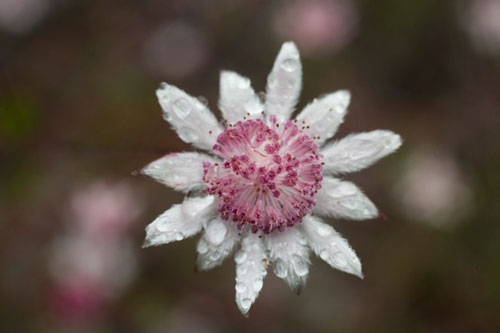 Pink Flannel Flower (Ian Brown)
Pink Flannel Flower (Ian Brown)
Environmentally and geologically valuable, the area the Stage 2 proposal includes some of the most magnificent and immensely rich wilderness in Australia - ancient rock pagodas formations, deep slot canyons; large caves and mazes; age-old montane heathlands, endangered upland swamps; snowgums, grassy woodlands and moist gullies that contain tree ferns; stands of old growth forest and rainforest.
It would also secure the outstanding ochre-coloured cliffs of the Blue Mountains' western escarpment, associated rate plant communities and see 1,000 plant species, a staggering 100 rare and threatened plants, animals and ecological communities protected.
It is made up four key areas, that stretch over 55 kms from Medlow Bath to Newnes Plateau, north to the Capertee Valley and Mount Airly.
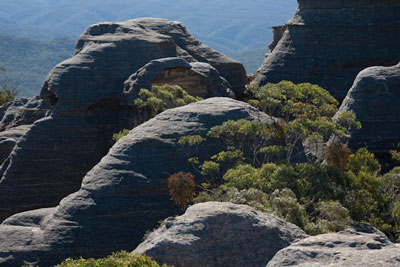 Baal Bone Creek
Baal Bone Creek
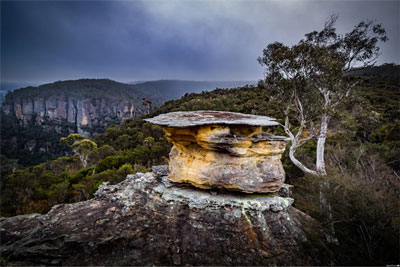 Scone Cake Rock (Walter Shepherd)
Scone Cake Rock (Walter Shepherd)
Combined with incomparable sandstone geodiversity, important and swathes of rock pagodas, the plateau is magnificent and unique in its environmental and geological importance.
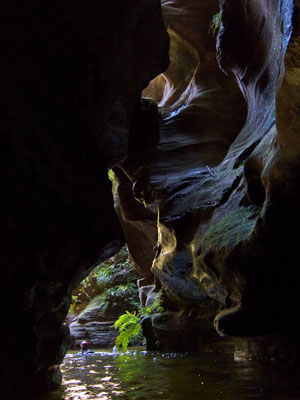
The Western Escarpment of the Blue Mountains is renowned for its outstanding golden clifflines.
Above the cliffs are rare plant communities. Below them the dramatic valley scenery is enhanced by a wonderful blanket of forest.
The area contains the first passes Europeans used to reach the interior of the continent and walking tracks, lookouts, cliffs and waterfalls which are much enjoyed by families and rock climbers.
The environment groups' reserve proposal is an integrated plan of action to protect, manage and interpret the area's heritage. It will protect:
- one of the most beautiful displays of sandstone geodiversity in Australia, comprising dramatically coloured sandstone escarpments and promontories, narrow canyons, cave overhangs, swamps and the complex arrays of rock pinnacles known as pagodas.
- one of the Blue Mountains' areas of highest plant diversity including ancient windswept montane heathlands, nationally endangered upland swamps, a unique species of snowgum (Eucalyptus gregsoniana) and other high plateau woodlands representing the highest development of native vegetation on Sydney Basin sedimentary rocks, and poorly conserved grassy white box woodlands on slopes below the sandstone;
- remarkable oil shale mining ruins on spectacular Airly Mesa;
- outstanding Aboriginal cultural sites on and around Newnes Plateau;
- the nationally significant first three rugged mountain passes west to the interior of Australia;
- the most popular recreation-forest destination in the Mountains.
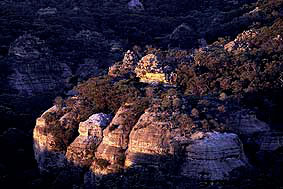
For more information on the proposal, you can read:
- Seeing the Gardens (Ian Brown, July 2009) - 11MB pdf
- The Gardens of Stone - Park Proposal (Keith Muir, October 2005) - 18MB pdf
Footnote: Designated State Conservation Areas allow for underground mining, while protecting the areas of conservation value through National Parks and Wildlife legislation.
We acknowledge the traditional custodians of this land
the Darug and Gundungurra people
and pay respect to their Elders past and present.
